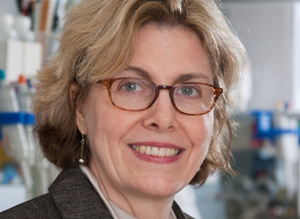One of the major topics discussed at a spring meeting of medical center leaders was clinical research and the use of biobanks.
 |
Jennifer Larsen, M.D. |
Below, Jennifer Larsen, M.D., vice chancellor for research, discusses UNMC’s goals in terms of biobanks.
How do biobanks help research?
Comparing DNA and other markers with health outcomes helps investigators better understand, find, personalize treatments for, and even cure disease. Without samples on-hand, researchers must apply for approval to recruit qualified individuals, then find and obtain samples from them for each new study. Depending on how many samples are needed, this process can take a year or more and be quite expensive. Using a biobank, researchers can have more than 10,000 samples at their fingertips to test within weeks or months.
|
UNMC already has biobanks focused on such specific conditions or diseases as pancreatic cancer, breast cancer, lymphoma, HIV/AIDS, rheumatoid arthritis and thyroid disease. We want to develop a large biobank that could rapidly provide samples — linked to deidentified electronic medical records — to study diseases as new markers are identified. The biobank also would provide a mechanism to find new associations between disease and place of work, or residence, or other personal characteristics that have not previously been considered.
What is UNMC doing to create a biobank?
To create this biobank, UNMC will need to consider and evaluate a process where all patients who come to The Nebraska Medical Center would be asked whether they would be willing to donate their excess blood samples for research, instead of being discarded, after the testing for their care is completed. If established, this bank could be linked to health data specific to that sample, such as age and gender, but not the individual’s identity. Other regional institutions may want to join this effort. As we assess potential development of this important resource, we will provide updates and we welcome feedback and hearing about any concerns.